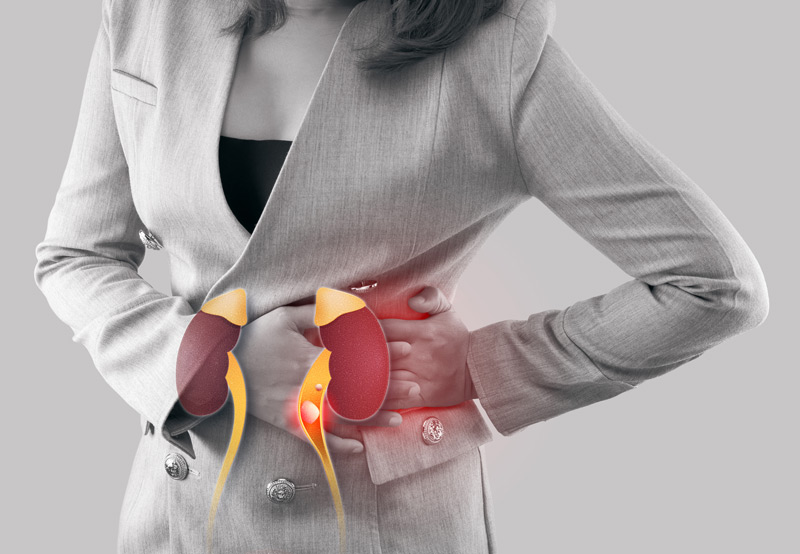

Ureteral stones are located in one of the ureters, which are the passageways that connect the kidneys to the bladder.
Ureteral stones can be too small to see with the naked eye. Usually, they pass through urine without causing any problems. If a ureteral stone is large enough, however, it can block the flow of urine from the kidneys to the bladder and cause severe pain.
Ureteral stones form when minerals and salts build up in urine, forming crystals that grow into stones.
The Main Types of Ureteral Stones
There are four main types of ureteral stones, including:
- Calcium stones: Calcium stones are the most common type of ureteral stone. Patients with calcium stones may have calcium oxalate stones or calcium phosphate stones.
- Uric acid stones: This type of stone forms when there’s an excessively high concentration of uric acid in urine.
- Struvite stones: Struvite stones may form after a urinary tract infection (UTI). The main components of struvite stones are magnesium ammonium phosphate (struvite) and calcium carbon-apatite.
- Cystine stones: Cystine stones are caused by the genetic disorder called cystinuria. Patients with cystinuria have the amino acid cystine leaking out of their kidneys into urine.

Risk Factors For Ureteral Stones
Anyone can develop a ureteral stone. However, the risk of forming a ureteral stone is higher among individuals who:
- Are male
- Are white
- Are between the ages of 40 and 60
- Don’t drink enough water
- Have had ureteral stones before
- Have diabetes
- Have a family history of ureteral stones
- Have polycystic kidney disease
Symptoms of a Ureteral Stone
Tiny ureteral stones may pass through the urinary system without causing any symptoms.
However, larger stones that block the ureters or any of the kidneys’ drainage tubes may cause the following symptoms:
- Intermittent severe pain in the upper flank (under the lower ribs, in the back)
- Pain that radiates to the lower abdomen
- Pain or a burning sensation while urinating
- Nausea
- Vomiting
- Bloody or discolored pee (brown, pink, or red)
- Cloudy pee
- Frequent urges to urinate
- Urinating only a small amount
Causes of Ureteral Stones
A high concentration of a stone-forming substance in the urine can cause the formation of ureteral stones. This is usually caused by a lack of water in the urine. Water is supposed to dissolve or flush stone-forming substances.
Diagnosing Ureteral Stones
Patients experiencing symptoms of ureteral stones may need to undergo the following diagnostic tests:
- Urinalysis: This test will look for signs of an infection and analyze levels of stone-forming minerals in the urine.
- Blood test: This test will evaluate kidney function, check for infection, and consider other factors that may be causing ureteral stones.
- Ultrasound: This test will use sound waves to identify blockages in the ureters.
- Computed tomography (CT) scan: This scan will help determine ureteral stone size, location, and hardness.
Treating Ureteral Stones
Patients with ureteral stones may be treated with shock wave lithotripsy, ureteroscopy, percutaneous nephrolithotomy, ureteral stents, or medical expulsive therapy (MET). The patient’s physician will describe the benefits of each procedure and make a recommendation.
